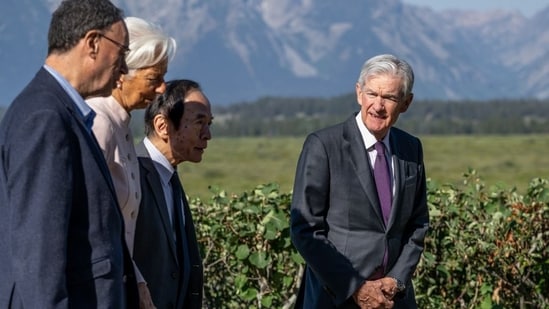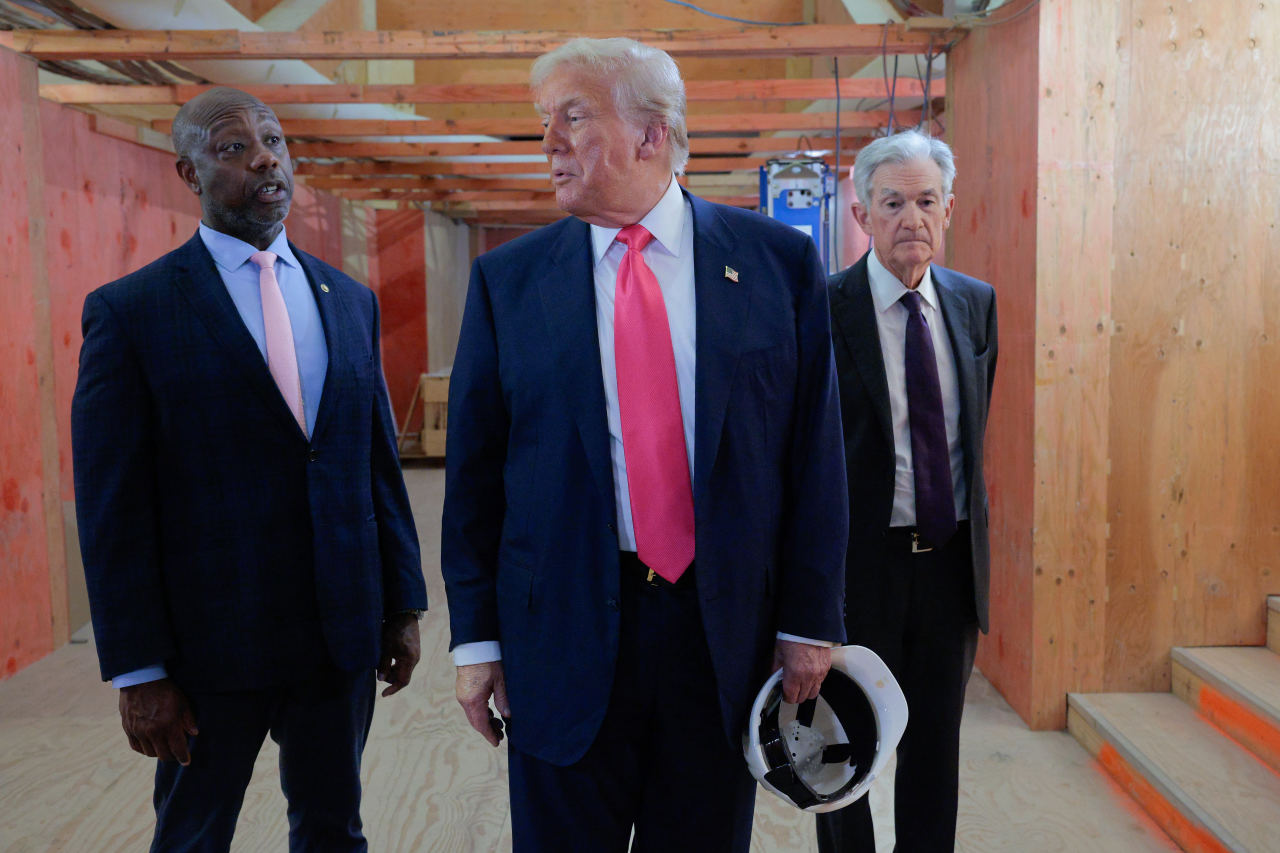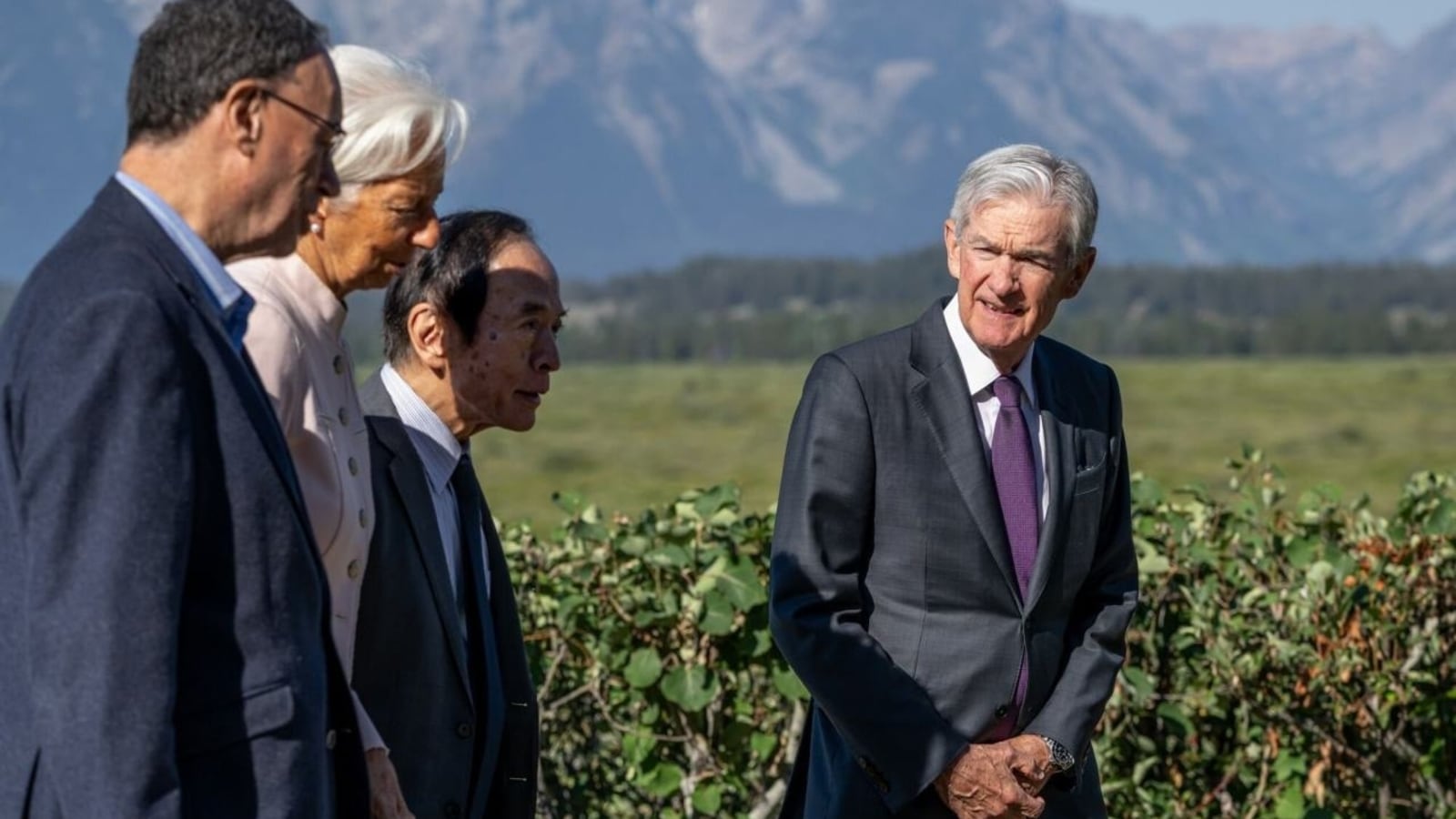JACKSON HOLE, Wyo.—Federal Reserve Chair Jerome Powell cautiously laced up an interest-rate cut next month but delivered a subtle message to anyone expecting aggressive easing: Don’t expect a downhill sprint.
 PREMIUM Jerome Powell walks with fellow central-bank chiefs at the Fed’s annual gathering in Jackson Hole, Wyo.
PREMIUM Jerome Powell walks with fellow central-bank chiefs at the Fed’s annual gathering in Jackson Hole, Wyo.
The debate among central bankers gathered in Wyoming’s Grand Teton National Park over the past two days suggests the focus is now shifting beyond the September meeting to whether the Fed will entertain cutting again at either of its final two meetings of the year, in October and December.
Powell’s cautious tone reflected the tricky economic dynamics the Fed is grappling with: a labor market he described as showing “curious” signs of softness despite a low unemployment rate, and tariff-driven price increases that are just beginning to work their way through the economy.
Powell’s stance appeared to mark his first public attempt this year to shape a consensus among colleagues who disagree over what to do. A few want slightly more-aggressive cuts and others question whether the Fed should be cutting at all with inflation heading toward 3%—away from the 2% target.
In a closely watched speech on Friday, Powell pushed back against two arguments that have been made recently to play down worries about the labor market and to build up the case against cutting.
First, he said the labor market’s apparent stability masked unusual underlying weakness, with both the supply of workers and the demand for them declining simultaneously. The question is whether falling demand mostly reflects fewer people looking for work—for example, due to tighter curbs on immigration, as several colleagues who are reluctant or opposed to cutting rates have argued.
Powell cautioned that focusing too hard on uncertain supply constraints could miss signs of weakening demand that might cause the labor market to deteriorate quickly.
That labor-market outlook is important because it created a second argument for cutting. Powell said any cooling labor market could provide a stronger mechanism to prevent one-time increases in costs of imported goods and materials from nourishing the kind of wage-price spirals that create lasting inflationary pressures.
Powell essentially adopted the rate-cutting arguments laid out by Fed governor Christopher Waller. He dissented last month from Powell’s decision to hold rates steady, favoring a cut just before substantial job revisions validated concerns about labor-market weakness. Powell waited for the data to validate that view—something likely necessary to bring around skeptical colleagues.
Powell, seen with President Trump and Sen. Tim Scott at Fed headquarters, has faced sustained White House pressure to cut rates.
Powell’s consensus-building effort still faces evident resistance. Some of his colleagues think the case to cut remains weak because inflation is too high and the labor-market risks he highlighted are overstated.
Price pressures are “rising and moving in the wrong direction” and the labor market “right now is reasonably good,” said Cleveland Fed President Beth Hammack in an interview Thursday. Because of large changes in immigration, “it’s not surprising to me that we’re seeing a shift in…labor demand,” she said.
Hammack also questioned whether tariff-driven price increases would remain temporary. She said she was “skeptical that the economic theory is going to match the practical reality that we’ve seen,” one where businesses are likely to test their ability to raise costs in the coming months.
“They’re uncertain as to where the demand curve is,” said St. Louis Fed President Alberto Musalem in an interview last week. “So they’re testing it and they are trying to raise prices and see how much they can do.”
Outside economists share similar concerns. “I was surprised by the dovishness of the speech,” said Michael Strain of the American Enterprise Institute, a right-leaning think tank in Washington, D.C. “It underweights the inflationary pressures in the economy and overweights the risk of labor market softening.”
Job seekers wait in line to speak to recruiters at a careers fair in Chicago.
Strain warned that cutting now could force the Fed to reverse course next year—something that could be even more politically fraught if the task falls to Powell’s successor. “The risk is that the Fed cuts in 2025 only to have to hike again in 2026,” he said. That risks fueling a perception that the Fed is willing to accept inflation that’s somewhat elevated from its 2% target, he said.
Those concerns about inflation—which were reflected in Powell’s remarks—suggest the central bank is entertaining a more restrained cutting cycle than last year as long as the labor market doesn’t deteriorate.
Powell’s measured tone Friday marked a notable shift from his Jackson Hole speech one year earlier, when he declared more emphatically that “the time has come for policy to adjust” and said “the direction of travel is clear.”
The difference reflects the Fed’s more precarious position: Interest rates are a full percentage point lower than they were one year ago, and inflation is running higher. The more measured approach suggests mortgage rates and other borrowing costs are unlikely to fall sharply unless the labor market weakens significantly.
The Fed cut rates by a full percentage point between September and December last year. Those reductions followed a meaningful decline in inflation and a steady rise in the unemployment rate since the middle of 2023.
Powell’s speech made clear how the Fed chair is still steering toward the soft landing he has long sought, but there’s significantly more air traffic to navigate around. The question is whether his latest approach can bring the economy in for a smooth touchdown without either stalling out or overshooting the runway.
Write to Nick Timiraos at Nick.Timiraos@wsj.com
 Powell’s Rate Cut Signal Reflects Economy’s Delicate Position
Powell’s Rate Cut Signal Reflects Economy’s Delicate Position  Powell’s Rate Cut Signal Reflects Economy’s Delicate Position
Powell’s Rate Cut Signal Reflects Economy’s Delicate Position
